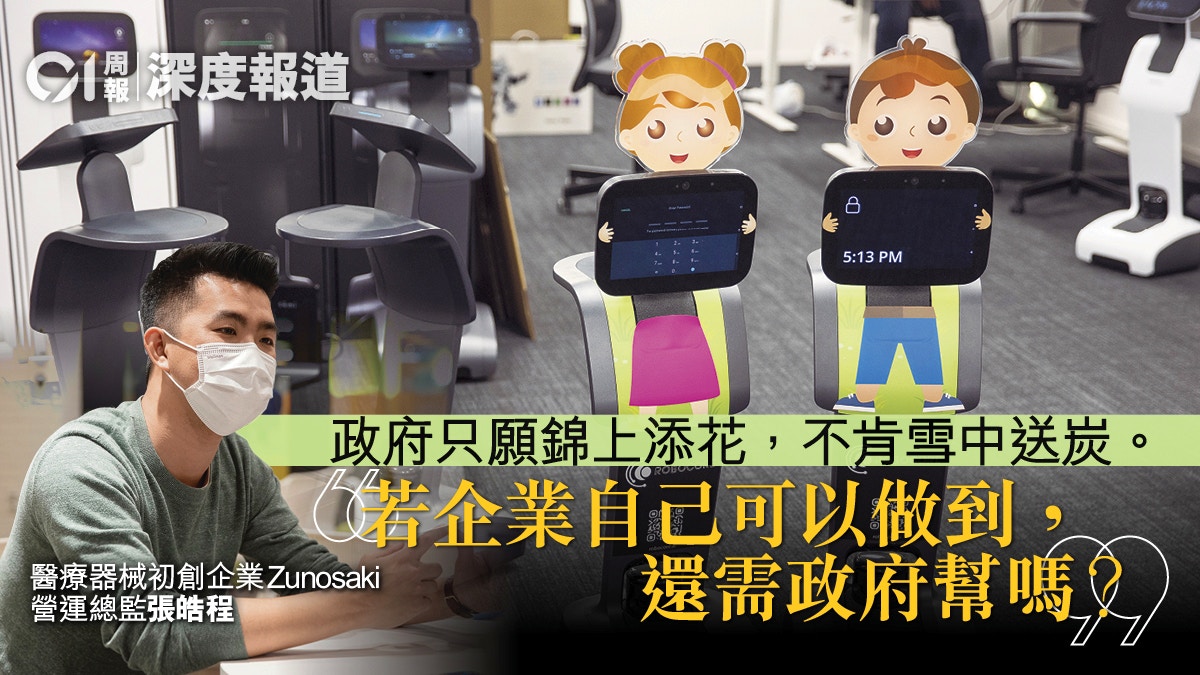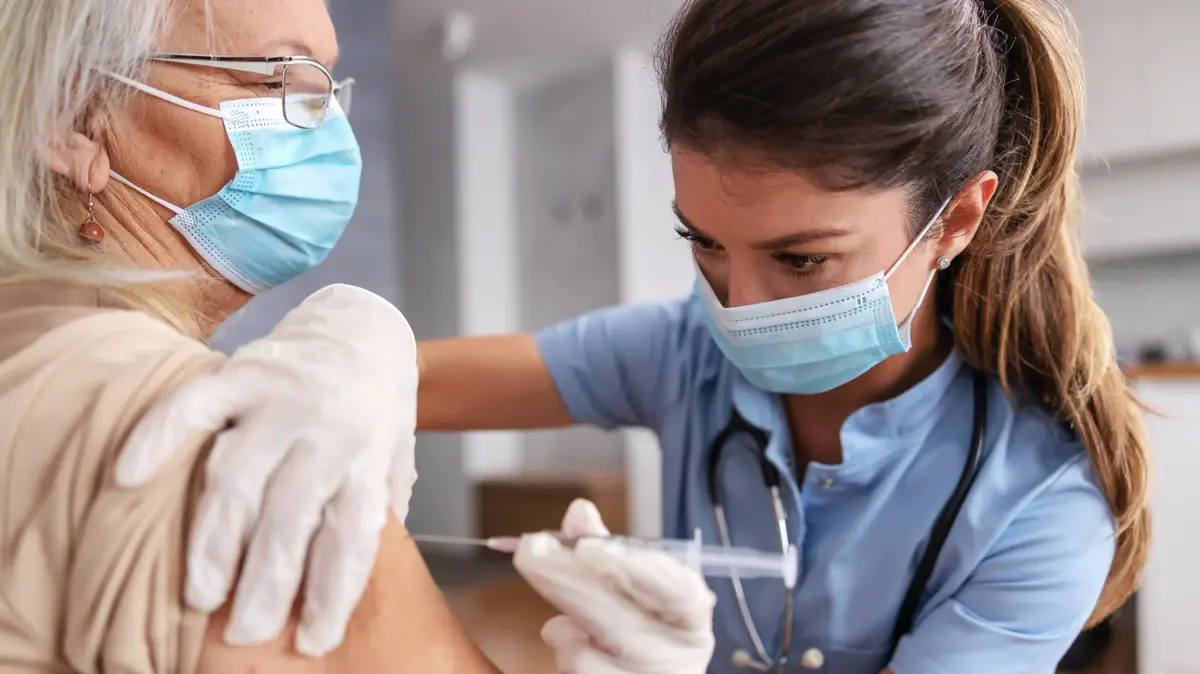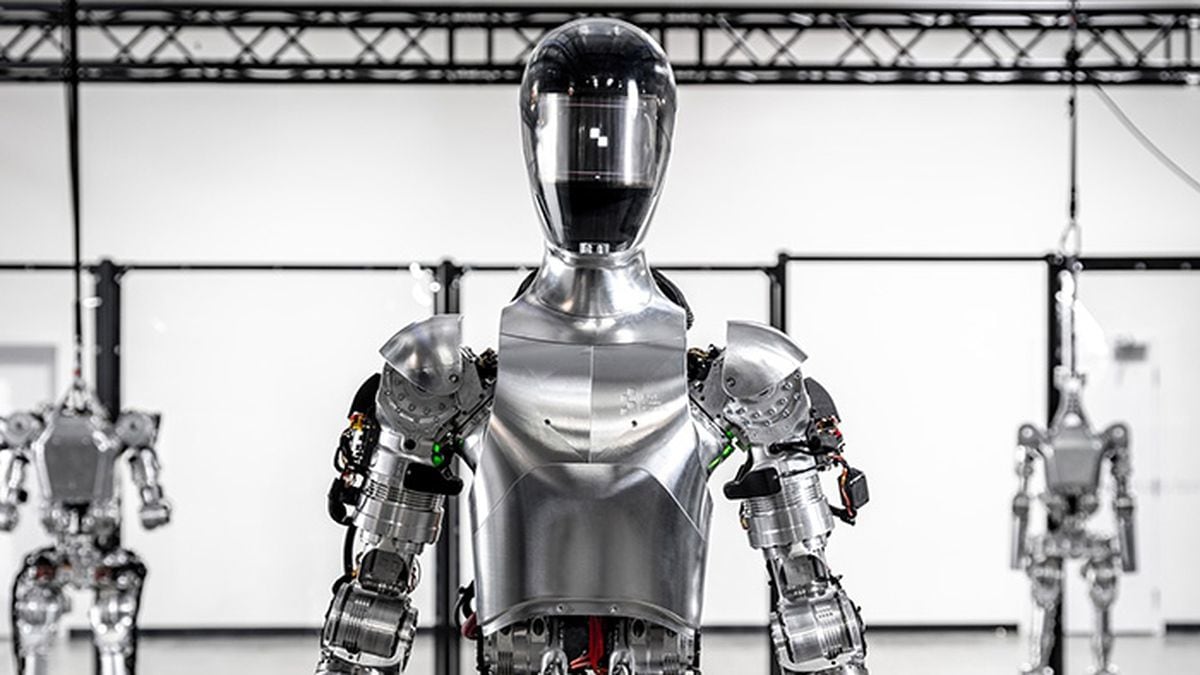weekly
Written by: Hao Ziyu
2021-03-22 19:30
Last update date: 2021-03-22 19:30
The outbreak of the new crown pneumonia epidemic has severely hit the social economy, the unemployment rate has continued to rise, and all walks of life are facing severe and even devastating blows.
However, there is a category of enterprises in the epidemic city, but their business is more prosperous.
Due to social distancing requirements and the demand for medical services, medical technology has emerged in a sluggish economic environment and has become a dazzling phenomenon.
Innovative medical technologies derived from artificial intelligence (AI) and big data are used to identify infected persons, perform treatment, and clean contaminated surfaces.
The epidemic has accelerated the development of smart medical care. Internet medical care, digital diagnosis and treatment, and telemedicine have gradually entered discussions in the medical field.
However, Hong Kong's medical technology products rely on foreign markets and fail to form their own industries.
Although Hong Kong’s scientific research products are recognized by Asia and the world, and there are more and more biomedical technology start-ups in the Science Park and Cyberport, there are only a handful of companies that can put scientific research results into products, as can be seen in the Hong Kong government’s blueprint. Not a plan for medical technology.
The epidemic is an opportunity and a "pain point", forcing Hong Kong to pay attention to the field of medical technology.
Can Hong Kong seize the opportunity and catch the ride of industrialization?
On February 23, in order to understand the development plan of the Science Park, the Legislative Council Committee on Commerce and Industry visited the Hong Kong Science Park. During the visit, they visited the "Robot Technology Promotion Center 2.0", the biomedical technology laboratory and the biological sample library to learn about the latest AI technology and Application of biotechnology.
Grant Thornton (Hong Kong) Certified Public Accountants published the "Asian Private Equity Investment Perspective 2021" in early February, showing that the epidemic has accelerated the development of medical technology and the medical field, which will bring opportunities and challenges to the private equity industry.
The global changes brought about by the epidemic can be seen. The stock market is generally optimistic about technology and healthcare stocks, which also reflects the potential of the industry.
In fact, due to social distancing restrictions and the demand for medical services, medical technology has emerged in a sluggish economic environment and has become a dazzling phenomenon.
For example, many AI companies in the Mainland have developed a lung computer tomography (CT) imaging diagnosis platform in response to the epidemic. AI models and algorithms help improve the diagnosis efficiency of doctors and are widely used by medical institutions.
During the epidemic, disinfection robots are also widely used around the world to thoroughly disinfect the surface of objects. Studies have found that disinfection robots can reduce the infection rate of the environment by 50% to 100%.
The global changes brought about by the epidemic can be seen. The stock market is generally optimistic about technology and healthcare stocks, which also reflects the potential of the industry.
(Profile picture)
Social distancing is needed to give birth to different business opportunities
In Hong Kong, like other treatment programs, rehabilitation training is extremely dependent on public hospital services.
In the epidemic, in order to avoid the "burst" of the public medical system, hospitals need to reduce non-emergency services. At the same time, it is very inconvenient for long-term patients and the elderly to enter and leave the hospital for physical therapy. Zunosaki's robotic HandyRehab can solve the problem.
Zunosaki is a local start-up company. In 2017, it launched a new rehabilitation robot HandyRehab made of plastic materials to assist stroke patients in their rehabilitation.
The manipulator currently sold by the company is a wireless version with a lithium battery. It weighs about 400 grams and is very lightweight. The therapist can use the monitoring data to adjust the range of movements and the number of exercises.
Zunosaki Operations Director Zhang Haocheng said that in response to the needs of the epidemic, the company has adjusted its products. In the middle of this year, it launched a simplified home version, which can be operated on a mobile phone program (App) to practice movements, and family members can also help patients use it.
Zhang Haocheng stated that the reason for launching the "In-House" version is to reduce the number of patients going to hospitals or rehabilitation centers for rehabilitation training, and to reduce unnecessary hospital admissions.
He also revealed that more than ten hospitals in Hong Kong have used this type of rehabilitation manipulator through tenders by the Hospital Authority. In addition, there are also nursing homes, physiotherapy centers, and even universities that offer physiotherapy courses. , Used for classroom learning.
He believes that it is the epidemic that has catalyzed the change in corporate R&D thinking-the home version of medical equipment needs to be assisted by hospital equipment.
This not only shortens the rehabilitation time, but also saves the patient the cost of physical therapy.
"Before the use of auxiliary equipment, the rehabilitation treatment of stroke patients required a physical therapist to hold the patient's hand and help the patient move their fingers, which is equivalent to six or seven pounds of pulling force, which is very hard. The appearance of the equipment frees the therapist's hands. , Now launching the home version is also to ease the pressure on the staff.” He said.
Robot Temi is a robot product introduced from Israel by a local company.
Zhang Haocheng said that although this robot is not a medical device, Zunosaki is responsible for its program development related to medical auxiliary functions.
He introduced that in 2019, an elderly home purchased a Temi robot. After the outbreak, the elderly home purchased four or five robots in February 2020, and customized robots. Functions, such as heat detection, disinfection, fragrance therapy, etc.
In addition, due to the ban on home visits due to the epidemic, the robot can be remotely controlled by the family members of the residents to make video calls with the family members in the home.
The global epidemic has caused a substantial increase in government and social healthcare expenditures.
According to data from Refinitiv, one of the world’s largest financial market data infrastructure providers, in 2020, Chinese biotechnology and healthcare companies will raise a total of US$2.1 billion in initial public offerings (IPOs) in the Mainland, Hong Kong, and the United States. In the same period of 2019, it was about twice as high.
For Hong Kong, healthcare-related companies accounted for about 30% of the total IPO size of Hong Kong—US$2.78 billion last year.
More than ten hospitals in Hong Kong have used Zunosaki's rehabilitation manipulators through tenders conducted by the Hospital Authority.
(Photo by Gong Jiasheng)
The epidemic becomes a pain point to stimulate technological innovation
Under the epidemic, more emphasis was placed on medical care and "no contact", which gave birth to business opportunities and opportunities.
However, Hong Kong seems to have realized this with hindsight and has not actively embraced new things.
Zhang Haocheng also mentioned that Hong Kong people have a problem of "inertia" and are unwilling to take a step-but in fact, once they have taken this step and tried new technologies, they will never look back.
"Just like after having a manipulator for rehabilitation, there is no physiotherapist to hold the patient's hand for training. However, our government needs a stimulus, and it must be inspired before it can really do it. , Otherwise, we will definitely not take the first step... This is a pity, because Hong Kong is not bad." Zhang Haocheng said.
The reason why Hong Kong people find it difficult to accept new things may be the result of the government's "up and down".
Take government web pages as an example. The design of many departmental pages seems to remain in the style of the 1990s. As Zhang Haocheng pointed out, many platforms and services within the government could have been automated and intelligent, but they have not seen much change.
The new crown pneumonia epidemic is undoubtedly a "pain point" that forces the government to change.
For example, the Immigration Department, which previously required the subject to submit information in person, also opened an online submission mode because civil servants worked from home and in order to reduce the flow of people in government departments.
So, can the medical technology industry in Hong Kong use the "pain points" of the epidemic to force the authorities to pay attention to industrial development?
In 2018, the value of Hong Kong's medical and healthcare equipment exports exceeded HK$13 billion, an increase of 4.6% year-on-year.
The results seem to be good, but Hao Meifeng, chairman of the Hong Kong Medical and Healthcare Equipment Industry Association, analyzed that most of the "export value" is made up of transit trade, and rarely is the product of local companies, because Hong Kong does not yet have its own medical services. The equipment industry does not even have a clear plan.
She pointed out that most of the advanced medical equipment used in Hong Kong is imported from overseas by local companies.
In the past two decades, local medical equipment companies have mostly acted as agents for overseas brands, shipping their products to the Mainland or Southeast Asia via Hong Kong.
"In the past few years, the government has invested a lot of resources in this field, and there have been many more start-ups. Although it is not very large-scale, it can still see the potential. However, this road is still full of difficulties..." Although the government has increased its support The financial assistance of science and technology start-ups, and the establishment and development of science and technology parks, Cyberport and other parks have increased the society's attention to the industry, but for start-ups, the process of product development from research and development to implementation is an extremely difficult process.
"Entrepreneurship is not friendly" Hong Kong government refuses to accept
Zhang Haocheng runs an authentic start-up company and understands the difficulties before the product launches.
He said that it will take several years for scientific and technological achievements to be implemented into products. Among them, the major issue that is vital to the life and death of start-ups is the capital chain.
There have been biomedical and scientific innovation start-ups who said that because the application for government funding is cumbersome and time-consuming, if government funds are in place, "innovation" may no longer be "new", so companies would rather find ways to raise funds to spend the seeds of the project. period.
In this regard, Zhang Haocheng said that the authorities will first allow companies to advance the payments themselves, and only after a few months or even half a year can they receive government payments.
He revealed that the robotic arm project was initially funded by the government's Social Innovation and Entrepreneurship Development Fund of 500,000 yuan.
From product development to implementation, the project spent a total of more than 7 million yuan, of which about 2 million yuan was funded by the government.
Zhang Haocheng said that the authorities will first allow companies to make advances on their own, and only after a few months or even half a year can they receive government payments.
(Photo by Gong Jiasheng)
"The government would rather help you after you (the enterprise) do a good job than support it at the beginning. But for an enterprise, if you do it yourself, do you still need your help?" Some helpless.
He pointed out that most companies in Hong Kong's medical products, such as rehabilitation equipment, are acting as sales agents. Very few companies actually do product research and development. In various medical equipment and healthcare equipment exhibitions, most of the attendees are also agents.
He also recounted the similar experiences of his friends, saying that not every company can rely on its own innovation to go on: "When friends make products and seek funding, many "predecessor companies" are willing to participate, but they are unwilling to do so. "The first one" is to hope that the new product can do the first step on its own, and is not willing to take risks."
Isn't this also the thinking of the government?
It is hoped that entrepreneurs will "fend for themselves" and wait for them to "break a blood path" before helping them, or choose projects that have a stable capital chain and have passed the risky period to fund them.
No wonder everyone says that Hong Kong is "unfriendly to entrepreneurs."
In this regard, Lin Langxi, an executive member of the Hong Kong Young Industrialists Association and vice chairman of Dongxing Automation Investment Co., Ltd., who is a "coming man", believes that the entrepreneurial and innovative atmosphere and environment are indeed related to the local government.
"Hong Kong is different from Shenzhen. Our government must see that your product has been a little bit successful before approving funds. And this is the problem-start-ups must have failed projects." Lin Langxi said. False, "entrepreneurship is risky" is common sense. If the government wants to encourage innovation and support entrepreneurship, it must have the courage to act as a "trustee."
As the top three entrepreneurial friendly cities in the country, the Shenzhen government strongly supports entrepreneurs with dreams. In order to create a good environment for innovation and entrepreneurship and promote high-quality employment, the Shenzhen government has successively introduced various subsidy policies.
For example, self-employed people can receive subsidies for renting venues, subsidies for social insurance, and subsidies for entrepreneurship-driven employment; for small and medium-sized private enterprises, Shenzhen has also introduced relevant policies to fully support it, making Shenzhen the city with the highest entrepreneurial density in the country.
According to mainland media reports, as of October 2020, Shenzhen has newly registered 253,800 small and medium-sized enterprises, and an average of 846 small and medium-sized enterprises are registered every day; and the city's total number of small and medium-sized enterprises is 2.2281 million, more than 99% of the city's total number of enterprises.
The entrepreneurial environment supported by the government has not only increased the density of entrepreneurship, but also gave birth to high-tech innovation.
According to the data from October last year, there are about 17,000 state-level high-tech enterprises in Shenzhen, and small and medium-sized enterprises account for 90%. They have created industry leaders subdivided by emerging companies such as DJI Innovation, Huishuo Technology, and BGI. Tencent, Vanke, Huawei, Zhengwei and other international companies on the list of the world's top 500 were also small and medium-sized enterprises.
The "sure-proof" pursued by the Hong Kong government will almost block the path of innovation and technology development.
(Profile picture)
Enterprises need assistance, both horizontal and vertical are restricted
Lin Langxi said that the study of unmanned driving is the best example, because the laws of Hong Kong do not allow unmanned driving on the road, which hinders the development of unmanned driving technology.
"The unmanned trial site of the Science and Technology Park is only fifty steps away... There is no way, the law is not allowed-this is the biggest problem. The test is not allowed because it must be foolproof." However, the Hong Kong government's pursuit of "sure-proof" is almost Will block the path of innovation and technology development.
He also took the Xin'ao line as an example, saying that this non-driving route has been running for more than ten years, but the staff is still the driver.
"You said, how do you change this kind of thinking?" He showed a look of helplessness, but then excitedly talked about the example of Israel: "In Israel, some people have built a wireless charging station, which can be placed under the bus stop. Charging electric buses. After confirming that it was feasible, the Israeli government immediately began to dig the ground to install the charging station. After the trial, it was officially used. This will never happen in Hong Kong, because it is worried that it will explode and the construction will affect the traffic. "
The limitations of the government have prevented Hong Kong's innovation from becoming an industry, and Hao Meifeng has witnessed various obstacles in the medical and healthcare equipment industry.
"If you ask me whether the government supports innovation, I must say yes. However, apart from the initial funding, the road to the market is still far away, and this part also needs support." She summarized the various obstacles as "horizontal "And "Vertical".
"Vertical" refers to continuous support on the timeline.
"The approved projects are actually your baby!" Hao Meifeng likes this because she is a mother, "Do you just send them to school and you're done? Will they grow up and become talents by themselves? You don’t need to pay attention to their grades and whether they need tutoring? If you give some money after approval, you don’t care about it again, it is very likely that these projects will be ruined. The difficulties encountered at every stage of each project are different."
Hao Meifeng took a member company of the association as an example. The company spent five years developing products, but was registered and certified "stuck" when it was almost ready for use. This medical device uses a new type of Chinese medicine, which is difficult to be used in Hong Kong. Certification.
She said: "So I always feel that the help provided by the government is never just a matter of money. It is necessary to look forward to the future, follow up and reflect at any time, optimize the funding scheme (funding plan), and understand the subsequent difficulties of these companies, such as facing certification. If there are problems, we will provide legal and certification assistance."
And "horizontal" is to open up the list of assistance and planning, not only to support fragile start-ups, but also to pay attention to other companies in the industry, and even to link with other fields.
Only by forming a link between industries and industries can the blueprint be jointly written.
The above was published in the 257th issue of "Hong Kong 01" Weekly (March 22, 2021) "Seize the Opportunity Under the Epidemic to Promote the Industrialization of Medical Technology". If you want to read the full text, please
click here to
sample the weekly newsletter and browse more in-depth reports.
Selected content of 257 issue of "Hong Kong 01" Weekly News:
[Cover Report] A major operation for the treatment of the special zone starts with the elimination of "real estate cancer"
Grasp the opportunity under the epidemic to promote the industrialization of medical technology
The 10-year goal of electric vehicles is only 10%, exposing the government's three major administrative drawbacks
Hong Kong opened a port 180 years ago
Is the plant milk economy coming?
Vegetarian and environmental trends hit U.S. dairy farmers
Mountain passengers explode and step on the line
In-depth report on the start-up of robotic artificial intelligence startups in the Medical Science Park 01 Weekly Report











/cloudfront-eu-central-1.images.arcpublishing.com/prisa/KMEYMJKESBAZBE4MRBAM4TGHIQ.jpg)



